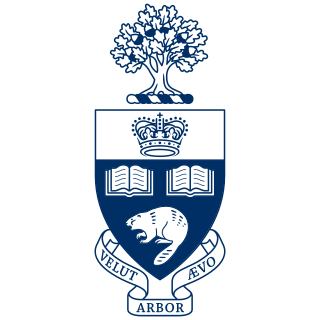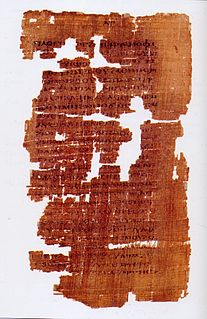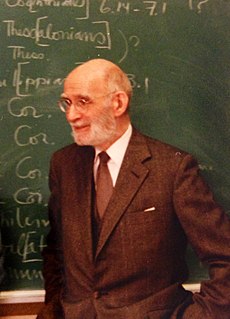
The Gospel According to Mark is one of the four canonical gospels and one of the three synoptic gospels. It tells of the ministry of Jesus from his baptism by John the Baptist to his death and burial and the discovery of the empty tomb – there is no genealogy of Jesus or birth narrative, nor, in the original ending at chapter 16, any post-resurrection appearances of Jesus. It portrays Jesus as a heroic man of action, an exorcist, a healer, and a miracle worker. Jesus is also the Son of God, but he keeps his identity secret, concealing it in parables so that even most of the disciples fail to understand. All this is in keeping with prophecy, which foretold the fate of the messiah as suffering servant. The gospel ends, in its original version, with the discovery of the empty tomb, a promise to meet again in Galilee, and an unheeded instruction to spread the good news of the resurrection.

The Gospel According to Matthew is the first book of the New Testament and one of the three synoptic gospels. It tells how the promised Messiah, Jesus, rejected by Israel, finally sends the disciples to preach the gospel to the whole world. Most scholars believe it was composed between AD 80 and 90, with a range of possibility between AD 70 to 110. The anonymous author was probably a male Jew, standing on the margin between traditional and non-traditional Jewish values, and familiar with technical legal aspects of scripture being debated in his time. Writing in a polished Semitic "synagogue Greek", he drew on three main sources: the Gospel of Mark, the hypothetical collection of sayings known as the Q source, and material unique to his own community, called the M source or "Special Matthew".

The Gospel of John is the fourth of the canonical gospels. The work is anonymous, although it identifies an unnamed "disciple whom Jesus loved" as the source of its traditions. It is closely related in style and content to the three Johannine epistles, and most scholars treat the four books, along with the Book of Revelation, as a single corpus of Johannine literature, albeit not from the same author.

Matthew the Apostle was, according to the Christian Bible, one of the twelve apostles of Jesus and, according to Christian tradition, one of the four Evangelists.
The historicity of Jesus is the question if Jesus of Nazareth can be regarded as a historical figure. Virtually all New Testament scholars and Near East historians, applying the standard criteria of historical-critical investigation, find that the historicity of Jesus is effectively certain, although they differ about the beliefs and teachings of Jesus as well as the accuracy of the details of his life that have been described in the gospels.
The term historical Jesus refers to attempts to reconstruct the life and teachings of Jesus by critical historical methods, in contrast to Christological definitions and other Christian accounts of Jesus. It also considers the historical and cultural context in which Jesus lived.

Biblical criticism is an umbrella term for those methods of studying the Bible that embrace two distinctive perspectives: the concern to avoid dogma and bias by applying a non-sectarian, reason-based judgment, and the reconstruction of history according to contemporary understanding. Biblical criticism uses the grammar, structure, development, and relationship of language to identify such characteristics as the Bible's literary structure, its genre, its context, meaning, authorship, and origins.

The Mar Saba letter is a Greek document which scholar Morton Smith reported in 1973 that he had discovered in the library of the Mar Saba monastery in 1958. The document has been lost and now only survives in two sets of photographs. The text purports to be an epistle of Clement of Alexandria and contains the only known references to a "Secret Gospel of Mark".

Jesus, also referred to as Jesus of Nazareth and Jesus Christ, was a first-century Jewish preacher and religious leader. He is the central figure of Christianity and is widely described as the most influential person in history. Most Christians believe he is the incarnation of God the Son and the awaited Messiah (Christ) prophesied in the Old Testament.

John Dominic Crossan is an Irish-American New Testament scholar, historian of early Christianity, and former Catholic priest who has produced both scholarly and popular works. His research has focused on the historical Jesus, on the cultural anthropology of the Ancient Mediterranean and New Testament worlds and on the application of postmodern hermeneutical approaches to the Bible. His work is controversial, portraying the Second Coming as a late corruption of Jesus' message and saying that Jesus' divinity is metaphorical. In place of the eschatological message of the Gospels, Crossan emphasizes the historical context of Jesus and of his followers immediately after his death. He describes Jesus' ministry as founded on free healing and communal meals, negating the social hierarchies of Jewish culture and the Roman Empire.

Géza Vermes, was a British academic, Bible scholar, and Judaist of Hungarian Jewish origin—one who also served as a Catholic priest in his youth—and writer on history of religion, particularly Judaism and early Christianity. He wrote about the Dead Sea Scrolls and ancient works in Aramaic such as the Targumim, and on the life and religion of Jesus. He was one of the most important voices in contemporary Jesus research, and he has been described as the greatest Jesus scholar of his time. Vermes' written work on Jesus focuses principally on Jesus the Jew, as seen in the broader context of the narrative scope of Jewish history and theology, while questioning and challenging the basis of the Christian doctrine on Jesus.
Dr. Edwin Masao Yamauchi is a Japanese-American historian, (Protestant) Christian apologist, editor and academic. He is Professor Emeritus of History at Miami University, where he taught from 1969 until 2005. He is married to Kimie Honda.
On the issue of the sexuality of Jesus, the traditional understanding of Christian churches is that Jesus did not marry and remained celibate until his death. That has not prevented speculation about alternative theories of his sexuality. The Gospels and the New Testament reveal little on the subject.
John Paul Meier is an American biblical scholar and Roman Catholic priest. He is author of the series A Marginal Jew: Rethinking the Historical Jesus, six other books, and more than 70 articles for peer-reviewed or solicited journals or books.
The historical reliability of the Gospels refers to the reliability and historic character of the four New Testament gospels as historical documents. Some believe that all four canonical gospels meet the five criteria for historical reliability; and others say that little in the gospels is considered to be historically reliable. Almost all scholars of antiquity agree that Jesus existed, but scholars differ on the historicity of specific episodes described in the Biblical accounts of Jesus, and the only two events subject to "almost universal assent" are that Jesus was baptized by John the Baptist and was crucified by the order of the Roman Prefect Pontius Pilate. Elements whose historical authenticity is disputed include the two accounts of the Nativity of Jesus, the miraculous events including the resurrection, and certain details about the crucifixion.

The Q source is a hypothetical written collection of primarily Jesus' sayings (logia). Q is part of the common material found in the Gospels of Matthew and Luke but not in the Gospel of Mark. According to this hypothesis, this material was drawn from the early Church's Oral Tradition.
James R. Edwards is an American New Testament scholar and minister of the Presbyterian Church.

Chester Brown adapted Gospel of Mark and part of the Gospel of Matthew to comics; installments appeared in his comic books Yummy Fur and Underwater. Brown ran the first installment of the Gospel of Mark in Yummy Fur #4 in 1987, and left Matthew unfinished after cancelling Underwater in 1997. Brown had planned to do all four of the canonical gospels, but in 2011 stated that it is unlikely he will finish even Matthew.














